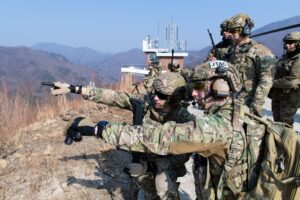
A preliminary design review (PDR) of a Full Motion Video Data Link (FMVDL) for the Lockheed Martin [LMT] F-35 is planned before the end of the year, according to the company. "Overall FMVDL development, including aircraft installation, is progressing per plan to field in 2024," per Lockheed Martin. In June last year, Lockheed Martin awarded Cubic [CUB] Mission Systems a contract to provide FMVDL for the F-35 to give Joint Terminal Attack Controllers (JTACs) full-motion video and thus better situational…














